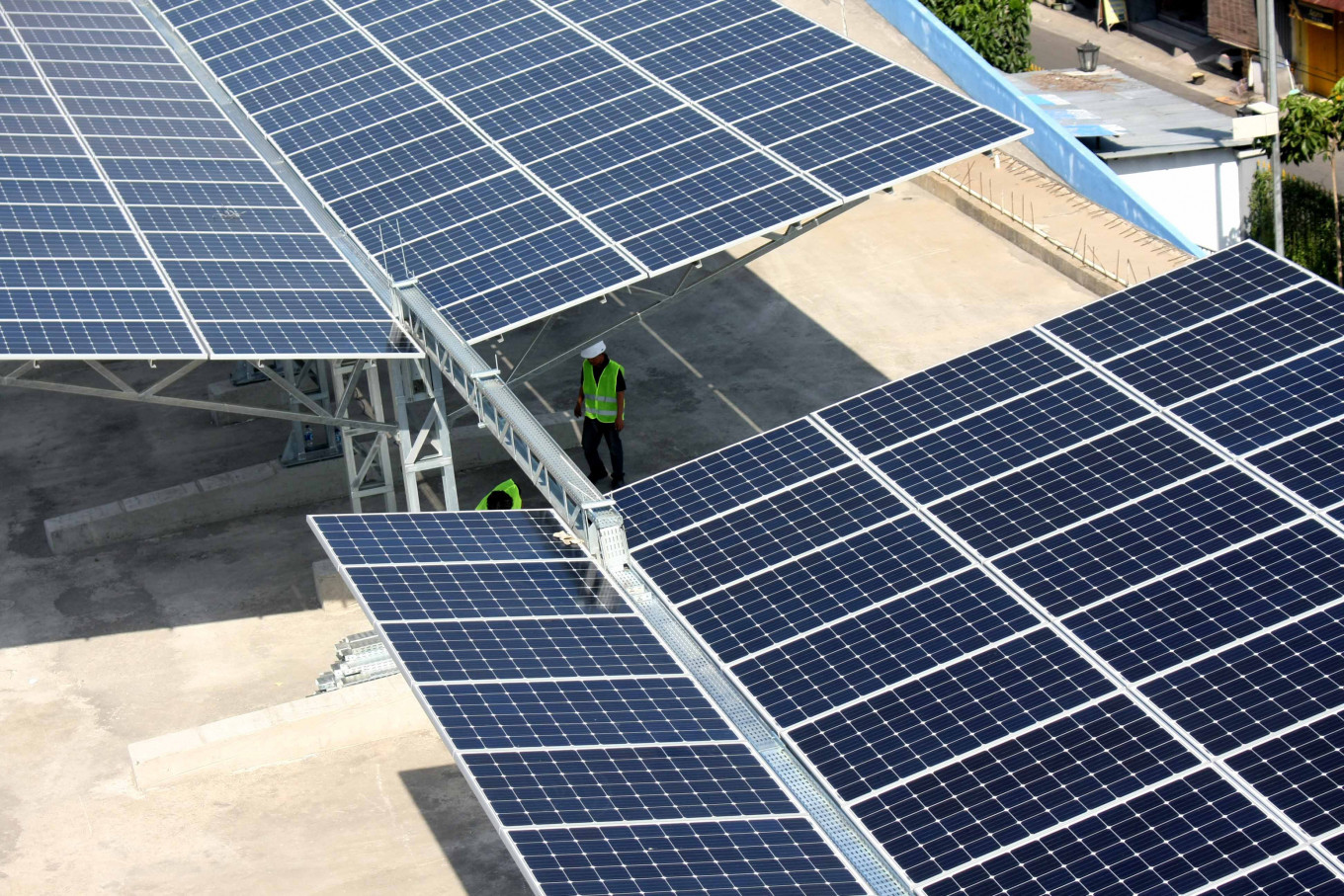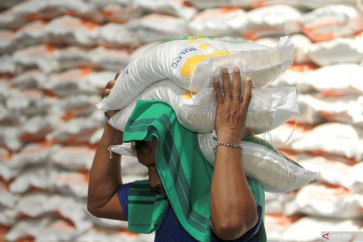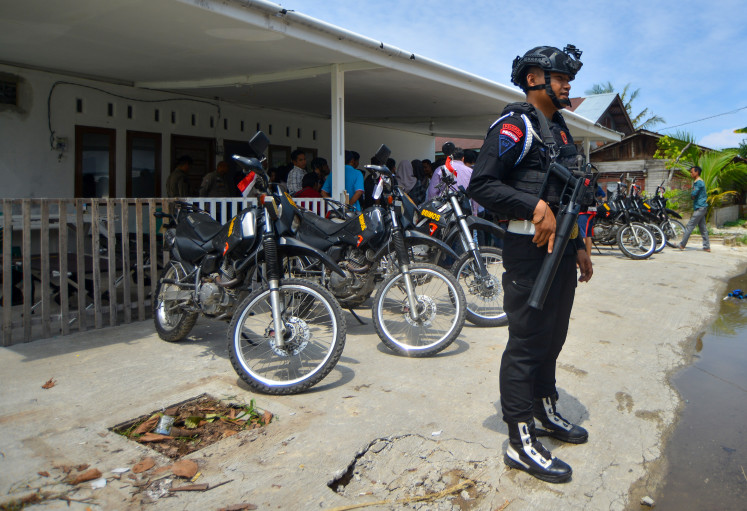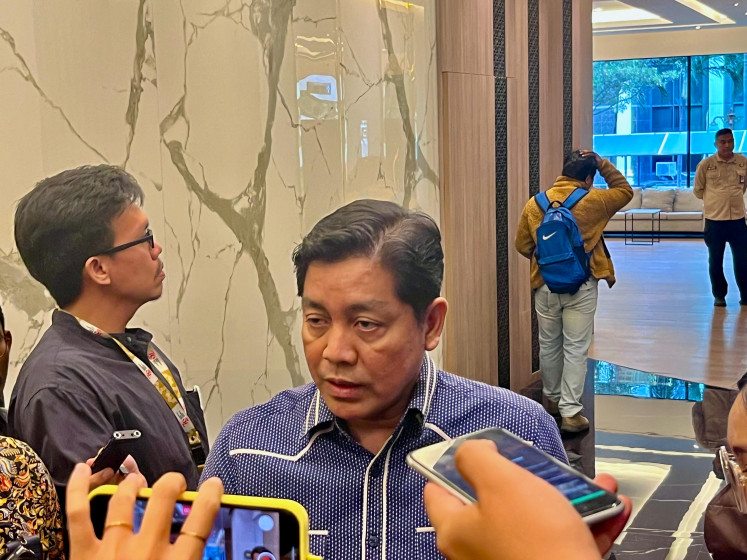Popular Reads
Top Results
Can't find what you're looking for?
View all search resultsPopular Reads
Top Results
Can't find what you're looking for?
View all search resultsJust energy: Unlocking the power of solar in Indonesia
According to a 2019 IESR study, residential buildings alone can generate between 195 and 565 GW and hundreds GW more from industrial buildings' rooftops.
Change text size
Gift Premium Articles
to Anyone
D
uring the Group of 20 Summit in Bali last November, Indonesia signed a Just Energy Transition Partnership (JETP) agreement with the International Partner Group (IPG) to accelerate Indonesia's energy transition. Along with the US$20 billion investment commitment, it aims to limit power-sector CO2 emissions to 290 million tonnes by 2030, achieve a 34-percent renewable energy mix by 2030 and achieve net-zero emissions by 2050.
This is a significant undertaking for a country that relies on fossil fuels, primarily coal plants, to generate 86 percent of its electricity. According to the Institute for Essential Services Reform (IESR), in order to meet the emission and renewable mix targets, approximately 8.6 gigawatts (GW) of coal plants must be decommissioned and 28 GW of renewables must be built, with solar photovoltaic (PV) accounting for approximately one-third of the capacity.
Because of the availability of resources, cost competitiveness and the modularity of the technology, solar PV could play an important role in decarbonizing Indonesia's energy system. We have plenty of solar power, which could meet nearly all of our future electricity needs. Based on available land, IESR has an estimated 3,300 to 20,000 GW.
Solar PV costs have dropped by 90 percent in a decade, and this trend is expected to continue as efficiency improves and new, less-expensive and more-reliable technologies enter the market. In two years, the levelized cost of electricity for utility-scale solar in Indonesia is expected to fall below US$0.05 per kWh.
Land acquisition is a major issue in many energy projects, particularly in Java-Bali, where 75 percent of electricity is consumed. The modularity of PV modules allows them to be installed instantly on any surface, whether land, water, rooftops or on agricultural land, without compromising productivity.
The simplest and quickest solution is to install solar panels on the roof. According to a 2019 IESR study, residential buildings alone can generate between 195 and 565 GW and hundreds GW more from industrial buildings’ rooftops. We can learn from Vietnam, which installed 9.3 GW of rooftop PV in a single year.
To avoid land-acquisition issues, which typically delay project implementation and thus impede the rapid and scaled energy transition, first increase deployment of solar rooftop PV and floating PV on reservoirs and dams, which have the potential to generate gigawatts of solar electricity before 2030, enough to accelerate our power system's energy transition, followed by ground-mounted utility-scale solar and other renewables that take more time to plan and implement.
From experience, we know the execution of utility-scale solar projects to scale faces enormous challenges and may prolong the process, resulting in long project operation at a time when we need their power to replace coal plants.
First is a regulation requiring state-owned enterprises (SOEs) to follow local content rules established by the Industry Ministry. Local content regulation (LCR) is required to advance manufacturing and grow the industry, but implementing it prematurely without first establishing a competitive domestic solar industry supply chain capable of meeting more than 40-percent LCR stifles solar PV development.
The government must understand that the solar PV industry in Indonesia is only capable of assembling solar modules using imported solar cells, glass and other components from other countries. Local PV products are 30 to 40 percent more expensive than imported ones. The technology is 5 to 10 years behind the best technology on the market, and no manufacturer in Indonesia is on Bloomberg's list of tier-1 producers; thus, using the product is considered high-risk and less bankable from a project finance standpoint.
Keeping LCR as it is without addressing the root cause only increases the cost of solar PV and slows its deployment to a successful fast and affordable energy transition.
To address this issue, the government must take several steps, beginning with relaxing LCR regulations, mobilizing resources and cutting red tape to build solar PV supply chains, beginning with midstream-industry solar-cell manufacturing and solar-module assembly in two years.
Following that, the upstream solar-PV industry will convert silica sand into polysilicon, ingots and wafer, which require high capital-intensive and scale economics and thus require some guarantee of domestic demand.
Demand for solar-PV installation comes from JETP's target and corporate demand for renewable energy. Domestic demand for solar PV is expected to be 3 to 5 GW per year beginning in 2025, rising to more than 10 to 15 GW by 2030 if the right policy and regulatory framework is already in place.
This is where state-owned electricity company PLN's transparent, scheduled and frequent procurement, as well as its level of support for renewables, comes into play. Utility-scale solar is dependent on PLN's renewable procurement, which is currently unpredictable and slow, as the only off-taker for electricity generated by private and consumer sources.
To achieve 34-percent renewables by 2030, PLN must procure 3 to 4 GW of renewables per year, including solar PV. Only about one-tenth of the capacity is currently delivered.
The solution to this problem is to reform the procurement regulation, fix the procurement system, improve the internal capacity of PLN's procurement unit, create standard PPA for renewables and develop shovel-ready projects to be included in PLN's RUPTL. Easing the procedure for consumers to install rooftop PV is a must.
How we can deliver this? Instruction from the top leadership is required. President Joko “Jokowi” Widodo must lead this reform if the country is to make a rapid and affordable energy transition, and build a solar PV industry to create added value and long-term energy security, on a similar level to the efforts to kick off his infrastructure and electric vehicle initiatives.
Jokowi has the potential to leave a legacy as a leader who unleashes solar power in the country.
***
The writer is executive director of the Institute for Essential Services Reform (IESR) and chairman of Indonesia Solar Energy Association.










